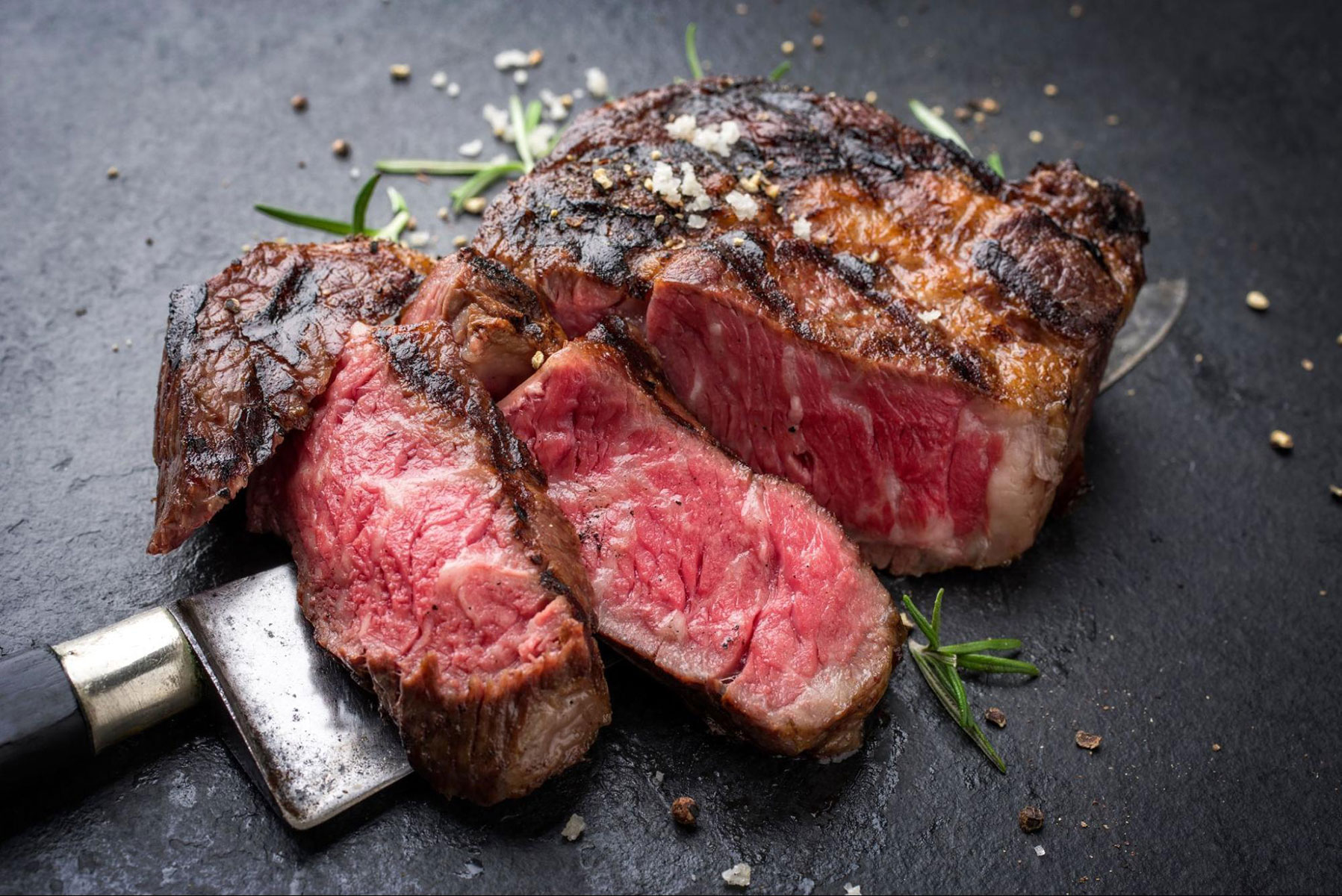Not all beef cuts are created equal. If you’re looking for something a bit different than the usual prime cuts, these underrated beef cuts are perfect for the adventurous foodie. From tenderloin tails to flanken ribs, these cuts of organic beef are sure to tantalize your taste buds and expand your culinary horizons.
For more juicy beef cuts, check out part one of this series here!
Tenderloin Tails
The reputation of tenderloin steak precedes it, so we won’t spend your time amping up the most expensive cut of beef. But few have cooked with tenderloin tails. Also called tips, the tenderloin tail is cut from the tapered section at the end of the raindrop-shaped tenderloin steak. To give the steak a more uniform shape, some butchers cut the tails off to be used in their dishes.
What It’s Like
The whole tenderloin is taken from the upper rear portion of the cow, which doesn’t get much exercise, so tenderloin tails are a tender yet lean cut of beef.
On the Flame
Since tenderloin tails don’t have much fat, they preserve their juicy tenderness best when cooked hot and fast. Slice pieces across the grain and toss them into a stirfry or marinate chunks of tenderloin tips and grill kabobs.
Delmonico
Delmonico steak is a bit of an enigma. It’s named for a NY steakhouse called Delmonico’s, but even the chefs there aren’t clear on the history. Since there’s no strict definition, butchers debate on what the exact cut is and whether or not there’s a bone. It usually comes from the rib or short loin section of the cow. At Delmonico’s in NY, they currently offer a boneless ribeye under that title on their menu.
What It’s Like
Despite the debate, there are a few things every butcher can agree on. Delmonico steaks are thick, usually at least two inches, with excellent marbling. At Ribbonwire Ranch, we pride ourselves on our organic Delmonico steak that combines ribeye tenderness with the beefy flavor of a chuck cut.
On the Flame
To take advantage of its tenderness, cook a Delmonico steak quickly in dry heat. It works beautifully on the grill or broiled in the oven.
Mock Tender
A mock tender steak is cut from the chuck of the cow next to the top blade. In appearance, it shares a similar shape to a tenderloin. However, it’s made up of quite a bit of connective tissue, and all that fiber gives it a chewy texture, giving it the name “mock tender.” Though don’t let this turn you off. With the right approach in the kitchen, a mock tender steak can become a delicate and delectable morsel. And because it’s not as popular or well known, it often is a very economical choice.
What It’s Like
Mock tender is a fibrous and lean cut of meat with a hearty beef flavor. Make use of your meat tenderizer and low, slow cooking methods to take full advantage of this budget-friendly steak.
On the Flame
Braise mock tenderloin slowly or cut it up for a stew. It can work on a grill as well if it’s been left in a marinade overnight.
Marinade Tip! For tougher cuts of meat, you want a marinade that balances an acid (like citrus juices, tomatoes, and vinegar) with oil. The acid breaks down the tougher fibers, and the oil preserves moisture.
Osso Buco Shank Steak
An osso buco shank steak is a juicy cut of meat that has a bone in the center. As the steak cooks, it slowly releases the rich bone marrow into a flavorful and succulent sauce. In traditional Italian cooking, a veal shank steak was used to make osso buco, but the beef shank is generally more accessible and promises a melt-in-your-mouth experience. Cooking an osso buco takes a bit of investment, making this the perfect dish for a special occasion.
What It’s Like
Osso buco is a shank steak that is classically braised in aromatic vegetables, tomatoes, and white wine. A shank steak is already a perfectly marbled cut of beef, and when it’s cooked for osso buco, it becomes a buttery soft explosion of flavor.
On the Flame
Braising is the traditional method of cooking an osso buco steak, but smoking or other slow-cooking techniques would also work.
Flanken Ribs
All ribs are cut from the rib section of the cow (sorry for being obvious) and have a section of bone surrounded by meat. There are different styles of slicing ribs, and most (spare ribs and short ribs) are sliced parallel to the bone. Flanken ribs, however, are cut laterally through the bone instead of being sliced in between each rib.
What It’s Like
Flanken ribs are exceptionally well-marbled. Cut across the bone, they have some pockets of more fat that carmelizes in the pan.
On the Flame
Marinate for a few hours or overnight in your flavoring of choice, then cook on a hot grill or under the broiler for a few minutes on each side.

